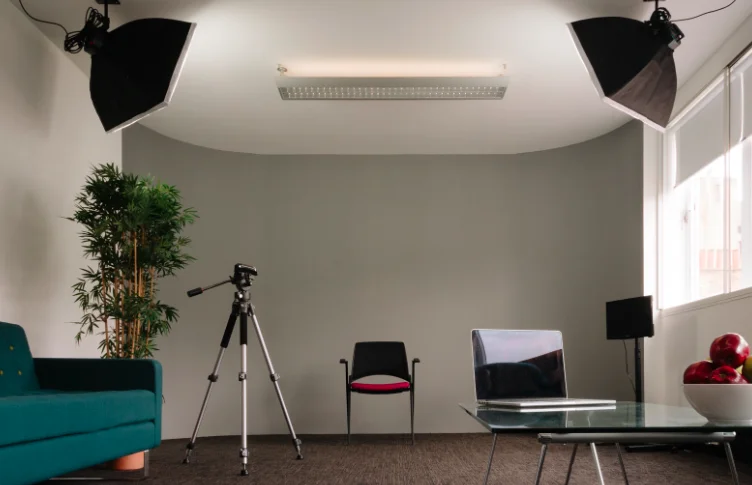Introduction
In the world of broadcasting and filmmaking, many technical elements contribute to the final product that audiences experience. While much of the focus tends to be on cameras, microphones, lighting, and editing, there is another behind-the-scenes space that plays a pivotal role in the creation of media content: the back casting room. The back casting room serves as a space where all the technical components are reviewed, evaluated, and adjusted before the content is ready for the next stage of production or broadcast. In this article, we will explore the significance of a back casting room, its components, operation, importance, and the technology that supports it. We will also take a look at the best practices for using such a room effectively.
What Is a Back Casting Room?
A back casting room is a space used in media production where the various elements, such as video footage, sound, lighting, and other technical aspects, are assessed and refined before being integrated into the final production. It is typically a controlled environment where technical experts work to ensure that the quality of the content meets industry standards before it moves into the final editing or broadcast stages.
Primary Function of a Back Casting Room
The main function of a back casting room is to evaluate raw media content and identify areas that need improvement. Whether it’s video footage that needs to be enhanced, audio that requires adjustments, or lighting that must be fine-tuned, the back casting room serves as the final checkpoint for technical issues. It provides an environment where all production teams, including video editors, sound engineers, and lighting specialists, can collaborate to ensure that the final product meets the highest possible standards.
In simpler terms, a back casting room is where everything that went into the production process is reexamined and adjusted. From the initial footage to the final scene, every technical element is tested, corrected, and reviewed, allowing for smooth transitions as the content moves forward in the production pipeline.
The Importance of a Back Casting Room in Media Production
A back casting room is essential in the production process because it acts as the last line of defense before a project moves on to the next stage. Without it, there is a risk that technical issues might not be caught early on, leading to costly mistakes or delays later in production. Let’s take a look at why the back casting room is so critical to the success of a project.
1. Ensuring High-Quality Output
One of the main reasons why the back casting room is indispensable is that it ensures the quality of the output. In a world where content production is becoming increasingly competitive, quality is key. Whether it’s a TV show, movie, or corporate video, every production must meet certain standards before it can be presented to the audience. By using the back casting room to review and refine content, production teams can be certain that the final product adheres to these standards.
2. Collaboration Across Teams
In many media productions, different departments handle different aspects of the project. The video team works on footage, the sound team manages audio, and the lighting team ensures proper illumination. The back casting room provides a central hub where these teams can come together and make sure that everything is synchronized. This collaboration is essential for creating a cohesive product, ensuring that no department’s work is out of sync with others.
3. Cost and Time Efficiency
Catching problems early in the production process is essential for saving both time and money. A malfunctioning camera, poor sound quality, or incorrect lighting can lead to delays and increased costs if not addressed before the final edit. The back casting room helps prevent this by serving as a space to identify and correct issues before they escalate. This leads to a smoother production process, saving both time and money.
4. Risk Management
Every media project carries a certain level of risk, especially when it comes to technical errors. A small mistake in video or sound quality can make the final product appear unprofessional or even unusable. By using it to review content in its raw form, teams can identify and mitigate these risks early on, ensuring that the final product is polished and error-free.
Key Components of a Back Casting Room
A back casting room is equipped with a variety of tools and technologies designed to support different aspects of production. These components play a critical role in ensuring that the content undergoes a thorough evaluation before it is deemed ready for the next stage. Let’s take a closer look at the key elements of a back casting room.
| Component | Purpose |
| Editing Software | Software such as Adobe Premiere Pro, Final Cut Pro, and Avid Media Composer for editing and refining video footage. |
| Audio Mixing Tools | Tools like Pro Tools, Logic Pro, or Audacity are used to refine and balance audio levels and ensure sound quality. |
| Lighting Control | Equipment used to adjust and fine-tune the lighting for better visual quality. |
| Video Monitors | High-definition monitors are used for viewing and evaluating video footage. |
| Control Panels | These panels are used to manage all technical elements, from video and sound to lighting adjustments. |
| Collaboration Tools | Digital platforms such as Frame.io or DaVinci Resolve for seamless collaboration among different departments. |
Each of these components plays a role in ensuring that all aspects of the media are ready for the next stage of production. Whether it’s fine-tuning the sound or adjusting the lighting to create the perfect mood, these tools allow professionals to refine the content in a controlled environment.
How the Back Casting Room Operates
The operation of a back casting room follows a systematic process that ensures every element of the content is reviewed and adjusted properly. Below is a typical workflow that takes place in a back casting room.
Step 1: Raw Footage Review
The first step in the back casting room process involves reviewing all raw footage captured during production. This is where editors examine video files, looking for any technical flaws such as poor color grading, shaky footage, or audio issues. During this stage, they also make sure that the content aligns with the original script or concept.
Step 2: Audio and Video Editing
Once the raw footage has been reviewed, the editing team works on refining both the video and audio. This can involve color correction, trimming, and adding special effects to enhance the visual appeal. Audio specialists use sound mixing tools to adjust the sound quality, balance audio levels, and add background music or voiceovers. This step ensures that the visuals and audio complement each other seamlessly.
Step 3: Collaboration and Final Adjustments
Once the editing process is complete, the team uses collaboration tools to share the progress with other departments. The sound team may have suggestions for video edits, or the lighting crew may need to adjust certain scenes. Feedback is shared, and adjustments are made accordingly to improve the overall quality of the project.
Step 4: Quality Control
After all the adjustments have been made, the content undergoes a final round of quality checks. This is the last chance to catch any technical issues that may have been overlooked. Video, sound, and lighting are checked one last time to ensure everything is in perfect sync before moving forward.
Step 5: Final Approval
Once everything has been adjusted and quality-checked, the content is submitted for final approval. If there are no further changes required, the content is then cleared for distribution or broadcast.
Technology in the Back Casting Room
The role of technology in a back casting room cannot be overstated. It is the backbone that supports all the activities that take place in the room. Some of the key technologies involved in the back casting room include:
- Editing Software: Advanced editing software like Adobe Premiere Pro and Avid Media Composer enables video editors to make precise adjustments and cuts, refine the color grading, and add effects.
- Sound Mixing Tools: Tools such as Pro Tools and Logic Pro X allow sound engineers to adjust audio levels, mix soundtracks, and enhance the clarity and depth of audio in the production.
- Lighting Systems: Lighting systems in the back casting room allow professionals to manipulate lighting conditions, ensuring that scenes appear visually stunning.
- Collaboration Platforms: Platforms like Frame.io and DaVinci Resolve enable real-time collaboration, allowing different departments to work together on the same project, even from remote locations.
The Role of Trained Professionals
While technology is important, the professionals who operate it are the real key to success. Skilled technicians, editors, and sound engineers are essential for ensuring that all aspects of production are handled with precision. Their expertise ensures that the technology in the back casting room is used to its full potential, resulting in high-quality content.
Best Practices for Using a Back Casting Room
To maximize the effectiveness of a back casting room, it’s important to follow best practices that ensure optimal results. Here are a few tips to ensure the back casting room operates smoothly:
- Keep Equipment Updated: Regularly check and update all technical equipment to ensure everything is working as expected.
- Monitor Quality Constantly: Continuous monitoring during the editing and mixing process helps catch errors early, making it easier to fix issues before they become problems.
- Foster Communication: Open communication between different departments helps resolve issues quickly and ensures everyone is on the same page.
- Test Everything Before Use: Always conduct tests before starting the actual work. This includes checking lighting, audio equipment, and video tools to ensure they’re functioning properly.
Conclusion
The back casting room is a critical yet often overlooked component in the production of media content. It plays a pivotal role in ensuring the quality and consistency of video, audio, and lighting before the final product is released. From preventing costly mistakes to improving collaboration among various departments, the back casting room is an essential element that helps take production quality to the next level.
With the right combination of skilled professionals, advanced technology, and best practices, it ensures that every project is ready for its debut, meeting the highest standards before reaching its audience. As technology continues to evolve, the back casting room will remain a vital part of the production pipeline, ensuring that the next big media production is of the highest quality.
Frequently Asked Questions (FAQs)
What is a back casting room in media production?
A back casting room is a space where technical teams review and adjust video, audio, and lighting elements before the final production or broadcast stage.
Why is a back casting room important?
It ensures the final product meets high-quality standards by catching technical errors and allowing for adjustments in sound, video, and lighting.
What equipment is used in a back casting room?
Common equipment includes video editing software, sound mixing tools, lighting systems, collaboration platforms, and high-definition video monitors.
Who works in the back casting room?
Skilled professionals, including video editors, sound engineers, lighting technicians, and production supervisors, work in the back casting room.
How does a back casting room improve production?
It provides a controlled environment for refining technical elements, improving the quality of the content, and ensuring consistency across departments.






